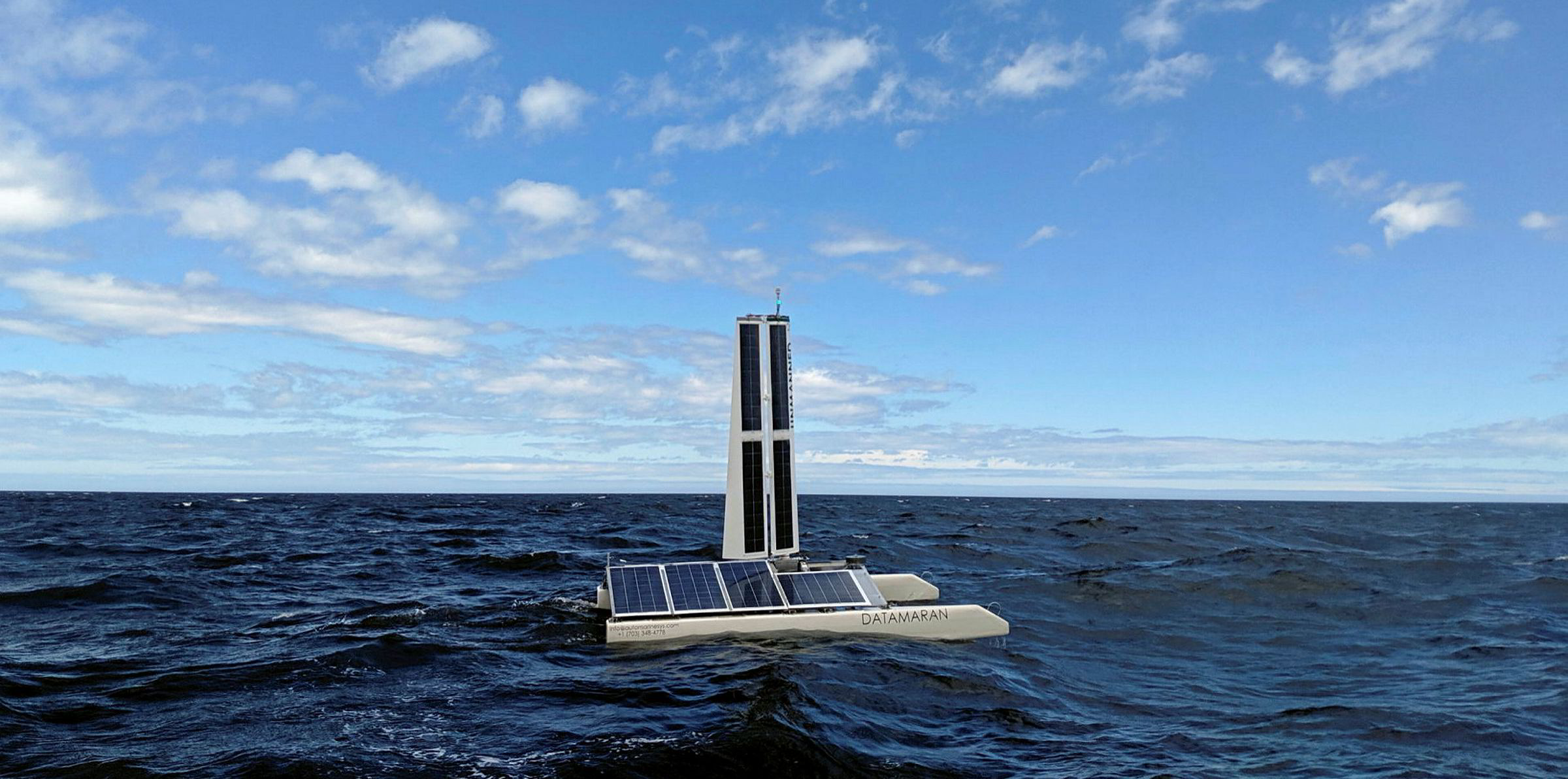Norwegian energy giant Equinor has unveiled an innovative self-propelled ‘sailing platform’ outfitted with Lidar to carry out wind resource surveys at remote offshore locations, potentially replacing the anchored and floating buoy-based designs currently generally used by industry.
The maiden Datamaran recently completed 18 months of tests in the Atlantic run by the developer with US technology start-up Autonomous Marine Systems (AMS) that the companies claim “show dramatic improvements in lead-time, cost and aerial coverage versus today’s options”.
The 16-foot (4.8-metre) long unit – which is propelled by a rigid-wing sail, with Lidar, navigation, and communication systems powered by solar panels backed up by large batteries – operates completely autonomously without a manned support vessel, continuously transmitting captured data to an onshore operations base via fault-tolerant communication channels.
“In keeping with our partnership with Equinor, we’ve named this latest class of vessels ‘Njord’. We’re looking forward to deploying the technology worldwide to deliver order-of-magnitude benefits to offshore wind development,” said AMS CEO Ravijit Paintal, noting that elimination of on-board fossil-fuel-burning engines also makes the technology “the most environmentally friendly survey system available”.
Equinor Wind US president Christer Af Geijerstam stated: “Equinor’s collaboration with Massachusetts-based AMS underscores our commitment to collaborate with, invest in, and support local business. The emergence of the US offshore wind energy industry presents an exciting opportunity for local, nimble, innovative companies to partner with established wind-farm developers.”
As well as collecting wind data, the Datamaran is kitted out with sensors to measure current and wave characteristics and detect avian and marine mammal during meteorological ocean, bathymetric and hydrographic surveys.
Floating Lidar (light detection and ranging) technology, which shoots a laser beam into the sky and gauges wind flow by reading the way it "scatters" in the atmospheric particles, is now treated as “bankable” measurement technology in Europe, following successful trials at several large projects, and a first commercial unit was recently installed off Asia.

